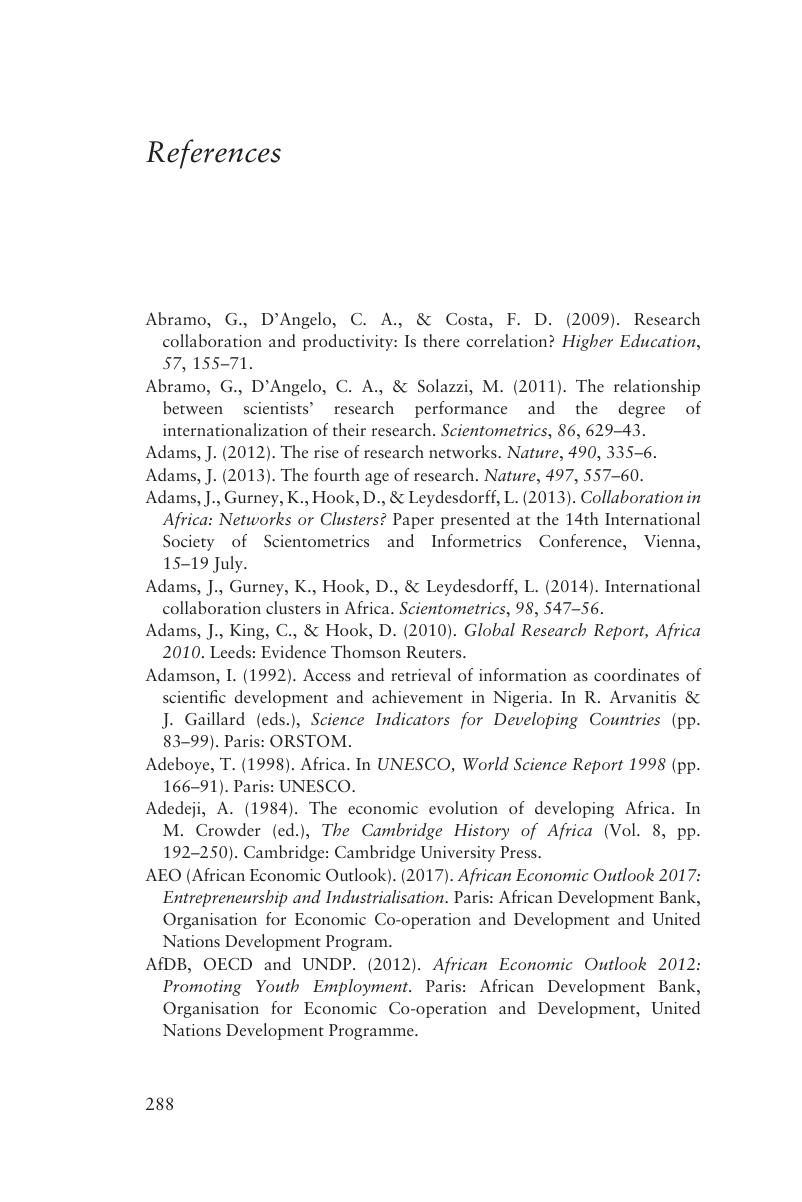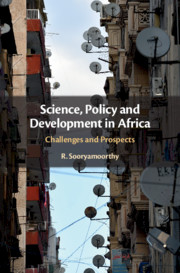Book contents
- Science, Policy and Development in Africa
- Science, Policy and Development in Africa
- Copyright page
- Dedication
- Contents
- Figures
- Maps
- Tables
- Preface
- Abbreviations and Acronyms
- 1 Science, Development and Africa
- 2 Science from Africa
- 3 Production of Science in Africa
- 4 Scientific Research Areas
- 5 Collaboration: Importance for Africa
- 6 Policy Matters in Science and Development
- 7 Science and Development
- References
- Index
- References
References
Published online by Cambridge University Press: 17 August 2020
- Science, Policy and Development in Africa
- Science, Policy and Development in Africa
- Copyright page
- Dedication
- Contents
- Figures
- Maps
- Tables
- Preface
- Abbreviations and Acronyms
- 1 Science, Development and Africa
- 2 Science from Africa
- 3 Production of Science in Africa
- 4 Scientific Research Areas
- 5 Collaboration: Importance for Africa
- 6 Policy Matters in Science and Development
- 7 Science and Development
- References
- Index
- References
Summary

- Type
- Chapter
- Information
- Science, Policy and Development in AfricaChallenges and Prospects, pp. 288 - 329Publisher: Cambridge University PressPrint publication year: 2020



